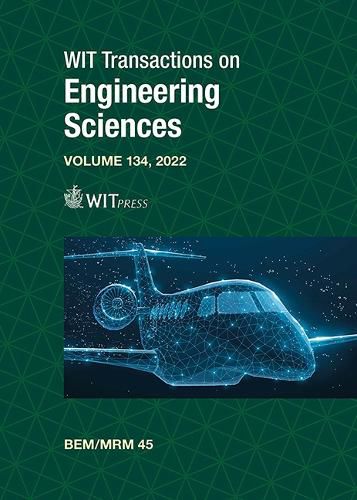Readings Newsletter
Become a Readings Member to make your shopping experience even easier.
Sign in or sign up for free!
You’re not far away from qualifying for FREE standard shipping within Australia
You’ve qualified for FREE standard shipping within Australia
The cart is loading…






Advances in techniques that reduce or eliminate the type of meshes associated with finite elements or finite differences are reported in the papers that form this volume.
As design, analysis and manufacture become more integrated, the chances are that software users will be less aware of the capabilities of the analytical techniques that are at the core of the process. This reinforces the need to retain expertise in certain specialised areas of numerical methods, such as BEM/MRM, to ensure that all new tools perform satisfactorily within the aforementioned integrated process.
The maturity of BEM since 1978 has resulted in a substantial number of industrial applications of the method; this demonstrates its accuracy, robustness and ease of use. The range of applications still needs to be widened, taking into account the potentialities of the Mesh Reduction techniques in general.
The included papers originate from the 45th conference on Boundary Elements and other Mesh Reduction Methods (BEM/MRM) and describe theoretical developments and new formulations, helping to expand the range of applications as well as the type of modelled materials in response to the requirements of contemporary industrial and professional environments.
$9.00 standard shipping within Australia
FREE standard shipping within Australia for orders over $100.00
Express & International shipping calculated at checkout
Advances in techniques that reduce or eliminate the type of meshes associated with finite elements or finite differences are reported in the papers that form this volume.
As design, analysis and manufacture become more integrated, the chances are that software users will be less aware of the capabilities of the analytical techniques that are at the core of the process. This reinforces the need to retain expertise in certain specialised areas of numerical methods, such as BEM/MRM, to ensure that all new tools perform satisfactorily within the aforementioned integrated process.
The maturity of BEM since 1978 has resulted in a substantial number of industrial applications of the method; this demonstrates its accuracy, robustness and ease of use. The range of applications still needs to be widened, taking into account the potentialities of the Mesh Reduction techniques in general.
The included papers originate from the 45th conference on Boundary Elements and other Mesh Reduction Methods (BEM/MRM) and describe theoretical developments and new formulations, helping to expand the range of applications as well as the type of modelled materials in response to the requirements of contemporary industrial and professional environments.